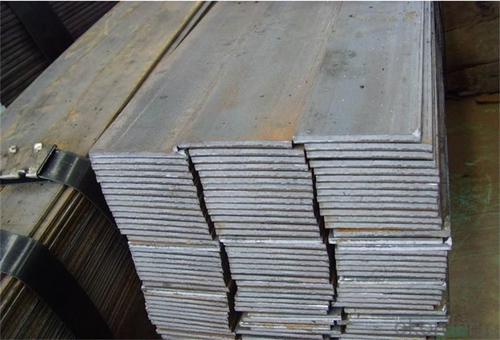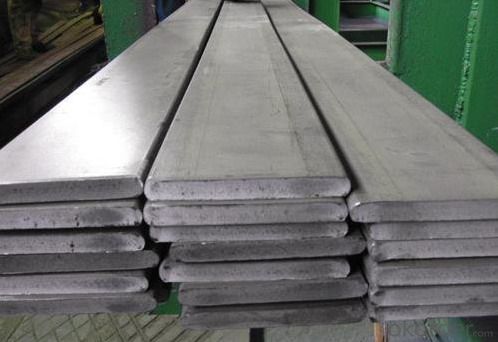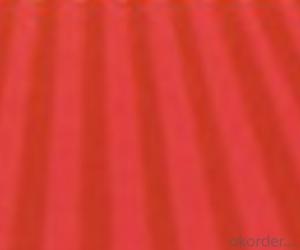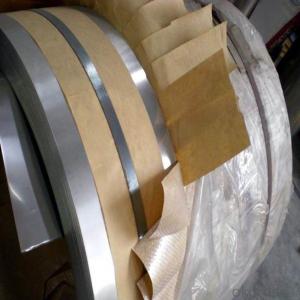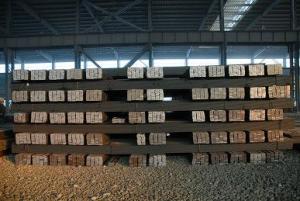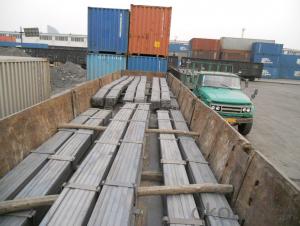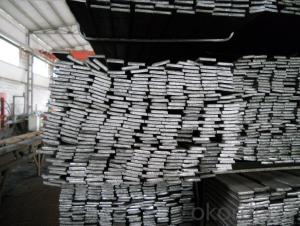GB Standard Flat Bar/Steel Flat Bar/Hot Rolled Spring Steel Flat Bar
- Loading Port:
- Qingdao
- Payment Terms:
- TT OR LC
- Min Order Qty:
- 2000 PCS
- Supply Capability:
- 38000 PCS/month
OKorder Service Pledge
OKorder Financial Service
You Might Also Like
GB Standard Flat Bar/Steel Flat Bar/Hot Rolled Spring Steel Flat Bar Details
| Grade: | Q235,Q345/SS400,SS540 | Standard: | ASTM,GB,JIS | Thickness: | 2.5mm-20mm |
| Width: | 12mm-150mm | Length: | customized flat steel | Place of Origin: | China (Mainland) |
| Technique: | Hot Rolled | Model Number: | customized flat steel | Application: | structure construction/making fence |
Packaging & Delivery
| Packaging Detail: | Mills standard export strong Packing |
| Delivery Detail: | 25-45 days |
GB Standard Flat Bar/Steel Flat Bar/Hot Rolled Spring Steel Flat Bar Specifications
Full size
Grade:Q195, Q215, Q235
Low price
GB Standard Flat Bar/Steel Flat Bar/Hot Rolled Spring Steel Flat Bar Description
Grade:Q235-Q345/SS400-SS540/S235JR-355JR
Standard: GB/JIS/EN/ASTM
Steel flat bar thick : 2.5-20mm
Steel flat bar wide : 12-150mm
Steel flat bar length :Any you want
GB Standard Flat Bar/Steel Flat Bar/Hot Rolled Spring Steel Flat Bar Pictures
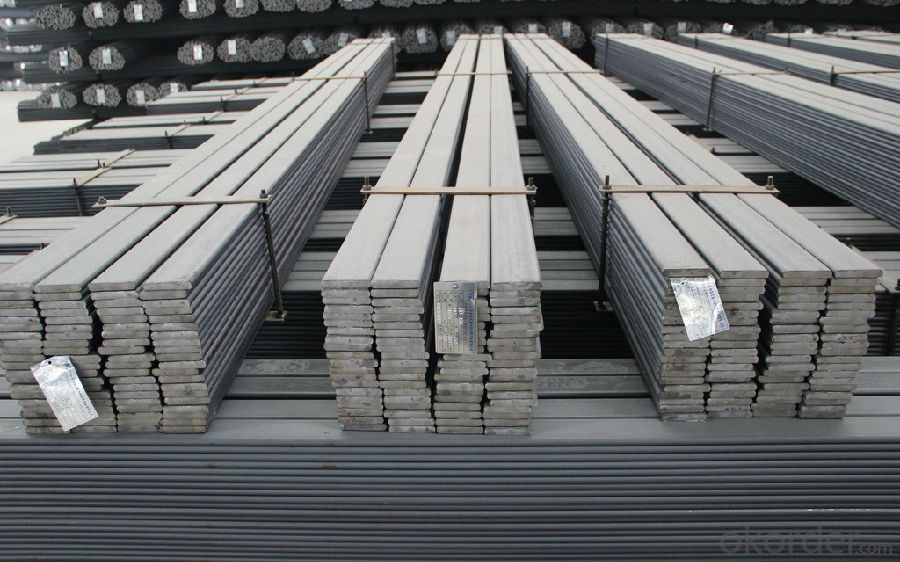

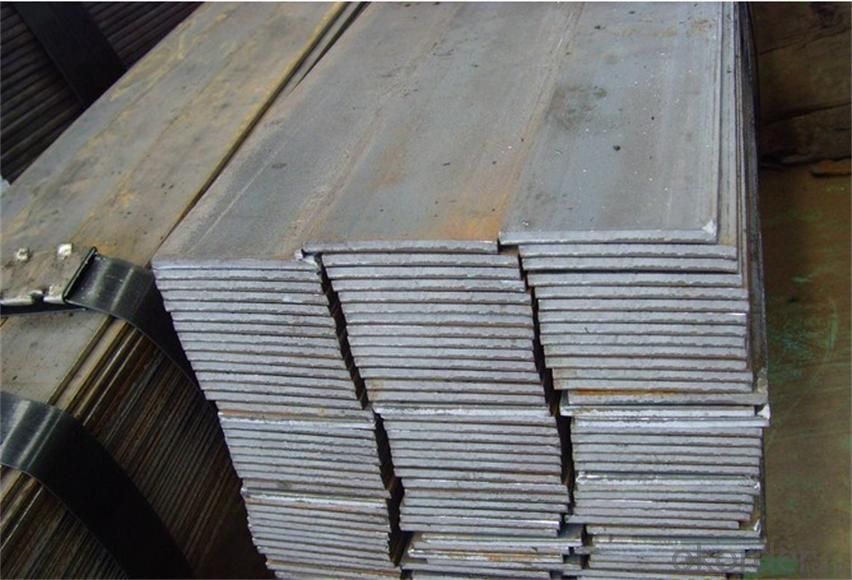
- Q: Are steel sheets resistant to termites?
- No, steel sheets are not resistant to termites. Unlike materials such as concrete or steel, termites can easily infest and damage steel sheets by burrowing into them and feeding on the wood framing or other organic materials that may be present. Therefore, it is important to take proper measures to protect steel sheets from termite infestation, such as using termite barriers, treating the surrounding soil, or regularly inspecting and maintaining the area to prevent termite entry and damage.
- Q: What is the difference between hard steel plate and soft steel plate?
- The so-called hard steel plate refers to the steel plate after processing has not been annealed, while the soft steel plate is annealed. Some die steels are subjected to pre hardening, and heat treatment is no longer necessary in the manufacture of injection moulds.
- Q: Can steel sheets be used for elevator shafts?
- Indeed, elevator shafts can utilize steel sheets. Steel, renowned for its durability, strength, and fire-resistant qualities, finds widespread application in the construction of elevator shafts. Typically, steel sheets are employed to form the walls and floors of these shafts, furnishing them with structural reinforcement and ensuring the safety of the entire elevator system. These sheets can be easily fabricated, allowing for precise tailoring to accommodate the specific dimensions and design prerequisites of the shaft. Moreover, various coatings can be applied to steel sheets to impede corrosion and bolster their longevity. Consequently, steel sheets represent a fitting choice for the construction of elevator shafts, providing a dependable and sturdy solution for vertical transportation systems.
- Q: What is called steel plate sanding process?
- Sand blasting can remove the oxide surface and floating rust on the surface of steel plate. It is a good process before anticorrosion painting. Sandblasting of other components may be more useful for pre coating treatment.
- Q: How do steel sheets perform in terms of sound insulation?
- Steel sheets have limited sound insulation capabilities. While they can help reduce some high-frequency noise, they are not as effective as other materials specifically designed for soundproofing, such as acoustic panels or soundproofing foams.
- Q: Can steel sheets be used for outdoor sculptures or artwork?
- Absolutely, outdoor sculptures or artwork can certainly make use of steel sheets. Steel is known for its exceptional durability and strength, which makes it a perfect choice for outdoor settings where sculptures and artwork might face severe weather conditions. By bending, cutting, and welding steel sheets, artists can fashion them into various remarkable shapes and forms, enabling them to craft distinctive and elaborate designs. Moreover, steel can be painted or coated to shield it from rust and corrosion, ensuring that the artwork will endure for a long time. Numerous renowned outdoor sculptures worldwide are constructed from steel, highlighting its adaptability and appropriateness for outdoor applications.
- Q: Can steel sheets be used for manufacturing storage racks or shelves?
- Yes, steel sheets can be used for manufacturing storage racks or shelves. Steel sheets are strong, durable, and have high load-bearing capacity, making them ideal for constructing storage racks or shelves that can hold heavy items. Additionally, steel sheets can be easily customized and fabricated into various shapes and sizes to meet specific storage requirements.
- Q: Can steel sheets be used for insulation in buildings?
- Steel sheets are not suitable for insulation in buildings because they have high thermal conductivity. This characteristic permits the easy transfer of heat and cold. Conversely, insulation materials like fiberglass, mineral wool, foam board, or cellulose are specifically designed to hinder the transfer of heat, cold, or sound. These materials are commonly employed in buildings as they possess low thermal conductivity and efficiently minimize heat loss or gain.
- Q: Can steel sheets be used for insulation?
- Steel sheets are not suitable for insulation as they lack the ability to retain heat or prevent effective heat transfer due to their good conductivity of heat and electricity. Instead, steel sheets can even conduct heat and cold, rendering them ineffective as insulators. On the other hand, materials like fiberglass, foam, or cellulose are far superior for insulation as they excel at trapping and preventing the transfer of heat, making them the ideal choice for insulation purposes.
- Q: Can steel sheets be used for architectural purposes?
- Yes, steel sheets can be used for architectural purposes. Steel offers various advantages such as strength, durability, and versatility, making it a popular choice for architectural applications. It can be used for constructing buildings, cladding, roofing, partitions, and other architectural elements. Additionally, steel sheets can be customized in terms of size, shape, and finish to meet specific design requirements, making them highly suitable for architectural purposes.
Send your message to us
GB Standard Flat Bar/Steel Flat Bar/Hot Rolled Spring Steel Flat Bar
- Loading Port:
- Qingdao
- Payment Terms:
- TT OR LC
- Min Order Qty:
- 2000 PCS
- Supply Capability:
- 38000 PCS/month
OKorder Service Pledge
OKorder Financial Service
Similar products
Hot products
Hot Searches
Related keywords


